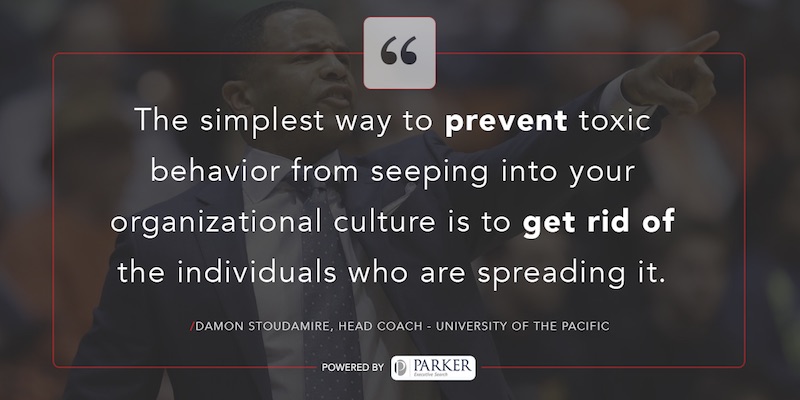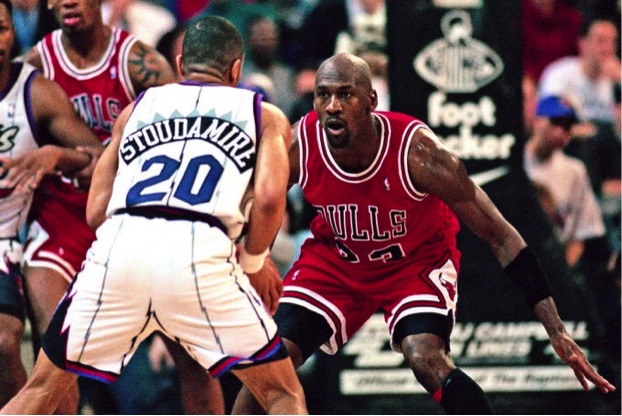Everyone wants them on their roster – the superstar. Whether you’re a college basketball coach or a Fortune 500 CEO, you’ve likely spent immense resources recruiting the best and brightest personnel to be part of your organization. The five-star point guard, the always closing sales person, the Ivy educated management guru – their title matters far less than the role they play in elevating your team and operation to the highest levels.
Research has consistently shown that 80% of an organization’s performance can be traced back to just 20% of their workforce; in the case of a sport like basketball, it means just one player can make the difference between a championship or mediocrity. However, the same research shows that the marginal benefit of one superstar in our organization is worth less than half of the determinant that individual can cause if they turn out to be toxic. In other words, you can likely get by without having a superstar on your team, but all it takes is one or two of these high performers to turn against you for the entire organization to go down in flames.
These days it seems like everywhere we turn, the news is filled with nothing but celebrated athletes causing drama in some form or another. Worse yet, we know all too well that this behavior is not limited to the field or court – we can simply walk down the halls of our own organization to see these toxic superstars fanning the flames of dissent.
When it comes to recruiting talented people for our organization, the line between immense success and spectacular failure is a precarious one. If we are going to be end up on the right side of the equation, then we must answer three key questions: 1) how can we to recognize whether the supremely talented individual we are recruiting will turn toxic; and 2) what can we do to ensure that our teams and organizations mitigate the damage caused by such behavior if it does manifest itself?
Recognizing Toxic Talent
I spent almost twenty years as a basketball player on collegiate and professional levels, and in almost every one of those years, I interacted with individuals whose nightly stat line was second only to the number of teammates they managed to antagonize during the game. It shouldn’t come as a shock that it was often the narcissistic and selfish players that tended to be the toxic ones, but what was surprising (and made things much more complicated) was that these individuals were also often the most productive and well-regarded by coaches and management. They had great charisma, self-esteem and work ethic during practice, often leading them to produce great results on the court.
Of course, these upstanding players were also the first to complain when something went wrong during practice or a game. They would speak of unity and then never accept any sort of blame for the team’s poor performance, or would be the first to preach the importance of playing by the rules and then commit a foul as soon as the ref wasn’t looking. Their contribution to the team was as prolific as it was infuriating.
Fortunately, by the time I retired as a player and transitioned into coaching, I had become fairly adept at identifying the tell-tale signs of these toxic superstars. They were all determined, bright, and unbelievably capable individuals… and almost all suffered from a profound lack of confidence. In a nutshell, talented people that turn toxic are likely insecure overachievers- they have been pushed all their lives to perform at the highest levels, and so they crave approval (of which many times they were denied). Our culture drives young people to the edge, whether as athletes or students, always demanding that their next performance be better than their last. Yet as these talented individuals are pushed to reach what seem like unattainable goals, the pressure builds inside them, eventually boiling over into toxic behavior as they push themselves further and further.
Toxic superstars are particularly proficient at spreading their insecurities to the rest of the organization. Their fear of failure drives them to put the blame on others, often actively seeking to pit one teammate or coworker against the other so as to create distance and disassociation from themselves and their own underachievement. Whether it occurs subconsciously or with full cognition, toxic superstars thrive in chaos because it is precisely the type of environment that they can control the frame and best manipulate those around them.

Limiting The Effects Of Toxic Behavior
The simplest way to prevent toxic behavior from seeping into your organizational culture is to get rid of the individual(s) who are spreading it. When I played in the NBA, it was commonplace to see mediocre players get traded away if their detrimental behavior outweighed their contributions on the court. Yet time and again, truly elite players often remained on the roster even when they refused to get along with teammates and coaching staff.
The reality of college athletics is much more akin to the latter. When toxic superstars are invaluable to the bottom line, whether its winning games, driving revenue, or any other measurable result, we often tolerate them for longer than we should. We do this to give us enough time to figure out how to replace their production. Of course, as any experienced coach knows, if you give a toxic player enough time, they will eventually turn the entire team against you.
To this end, if you feel as though you want (or need) to give these types of individuals an opportunity to turn things around, then there are several strategies you can implement to mitigate any damage they might cause in the meantime.
First, remember that toxic behavior is almost always rooted in an individual’s insecurity. Because insecurity in high achievers develops early on, they often have difficulty internalizing praise and must constantly be reassured. But patting your star player on the back every so often isn’t suddenly going to resolve their deeply rooted self-esteem issues. Moreover, any high achieving athlete or executive has been around enough insincere coaches and managers in their time to see right through false accolades. Your praise must be authentic, it must be specific to what that individual wants to achieve, and it must be done in an environment in which the they will be most receptive to it (e.g. in front of others). It’s also important to be mindful of how their teammates and colleagues perceive such praise, you cannot allow it to appear as though you are placing them on a pedestal, nor can you outwardly declare you’re just managing their ego.
Secondly, you must set clear (but limited) performance expectations. Individuals that are driven by a seemingly insatiable drive to overachieve will stop at nothing until they have burned themselves, and everyone around them, out. Just as my own former coach, Gregg Popovich, has mastered, you must rest your most talented players not only to preserve their physical strength for the long haul, but also to ensure that the entire roster stays balanced both physically and mentally throughout the season. The only thing worse than driving your star player to exhaustion is when they pull the rest of the team down with them.

Last, and possibly most importantly, you must create a framework within your organization that forces your superstars to collaborate with their teammates or colleagues, regardless of whether they would prefer to go at it alone (and we know they almost always do). Phil Jackson called this philosophy, “surrendering the ‘me’ for the ‘we’”, and used it especially when it came to managing all-time great Michael Jordan.*
Jordan was exactly the type of player who could single handedly carry his team through a game, but Jackson was very aware that there was no way the Bulls could win consistently if the entire game plan relied solely on one player. Indeed, teams soon developed what became known as the “Jordan Rules” defensive strategy, which was specifically designed to subvert, stifle and knock Jordan into submission. Jackson developed the Triangle Offense to allow the rest of the team to take advantage of situations when an opponent diverted all its resources to defending Jordan. Jackson would utilize the same Triangle Offense with the Lakers and Kobe Bryant, eventually winning 11 NBA Championships.
In the end, the choice of how you build your organization is yours and yours alone. You can choose to fill it with two and three star players and play it safe, or attempt to recruit elite, blue chip talent and risk exposing yourself to a potentially lethal dosage of hubris and insecurity. As someone who aspires to win at the highest levels of college basketball, I choose the latter. I will do so by taking a cautious and calculated approach to recruiting and managing these talented, but sometimes problematic, individuals.
*I averaged 25.2ppg, 11.7apg and 5.6rpg my first two seasons against Jordan. It’s very possible he took the whole ‘surrendering’ concept a bit too far.
Damon Stoudamire is currently the head men’s basketball coach at the University of The Pacific. He was a collegiate All-American at the University of Arizona and played 15 seasons in the NBA, being named Rookie of the Year in 1996.

